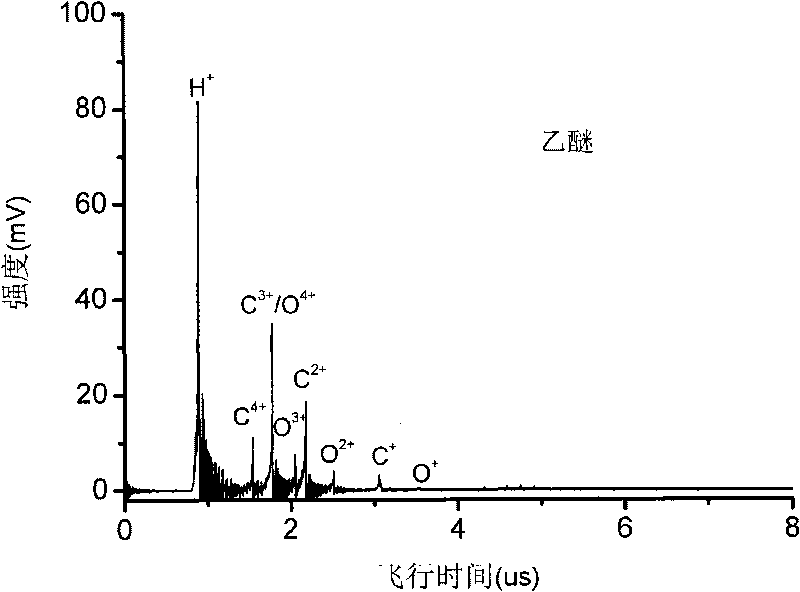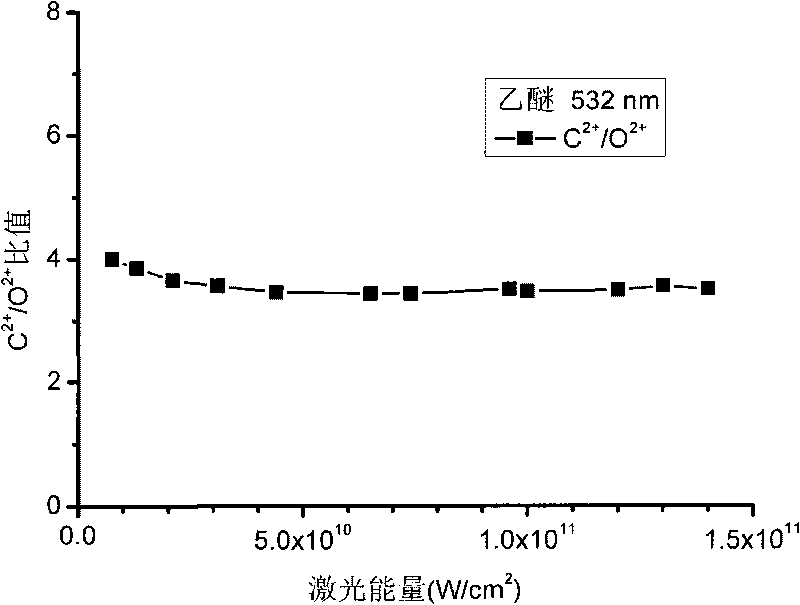Time-of-flight mass spectrometer for measuring ratio of nano-particle component elements in real time
A time-of-flight mass spectrometry and nanoparticle technology, applied in the field of time-of-flight mass spectrometers, can solve the problems of incomplete ionization, inability to measure difficult-to-volatile inorganic components of aerosol particles, and inability to obtain quantitative information, so as to improve the hit efficiency Effect
- Summary
- Abstract
- Description
- Claims
- Application Information
AI Technical Summary
Problems solved by technology
Method used
Image
Examples
Embodiment 1
[0032] Example 1
[0033] In order to investigate the ionization efficiency of laser energy on cluster molecules, ether nanoparticles with a particle size of less than 10 nm were detected at lower laser energy. Ether nanoparticles are produced by the bubbling method. Specifically, the ether liquid is placed in a container, and argon gas at a certain pressure is introduced into the liquid surface through a stainless steel tube, and the argon gas overflowing from the liquid surface carries the ether liquid into another stainless steel tube. The pulse sampling device forms ether nanoparticles with a particle size of less than 10nm after passing through the pulse valve. figure 2 It is the time-of-flight mass spectrogram of ether nanoparticles in the device of the present invention, and the laser energy used is 7.6×10 9 W / cm 2 , the laser wavelength is 532nm, the opening time of the laser relative to the pulse valve is 700us, and the frequency of the laser and the pulse valve is...
Embodiment 2
[0037] Figure 5 C in the ionization spectrum of ethanol nanoparticles under different laser energies 2+ / O 2+ The variation trend of ratio with laser energy. The laser wavelength used is 532nm, and the laser energy range is 9.0×10 9 ~1.3×10 11 W / cm 2 . The opening time of the laser relative to the pulse valve is 900us, and the frequency of the laser and the pulse valve is 10Hz. As you can see, C 2+ / O 2+ The ratio ranges from 1.5 to 2.0, which is close to the ratio of C and O elements in ethanol molecules to 2. The results of Examples 1 and 2 show that this method can be used to quantitatively measure the element ratio of nanoparticles, and the measurement results are not affected by changes in ionizing laser energy and wavelength.
PUM
| Property | Measurement | Unit |
|---|---|---|
| particle diameter | aaaaa | aaaaa |
| wavelength | aaaaa | aaaaa |
Abstract
Description
Claims
Application Information
 Login to View More
Login to View More - Generate Ideas
- Intellectual Property
- Life Sciences
- Materials
- Tech Scout
- Unparalleled Data Quality
- Higher Quality Content
- 60% Fewer Hallucinations
Browse by: Latest US Patents, China's latest patents, Technical Efficacy Thesaurus, Application Domain, Technology Topic, Popular Technical Reports.
© 2025 PatSnap. All rights reserved.Legal|Privacy policy|Modern Slavery Act Transparency Statement|Sitemap|About US| Contact US: help@patsnap.com



